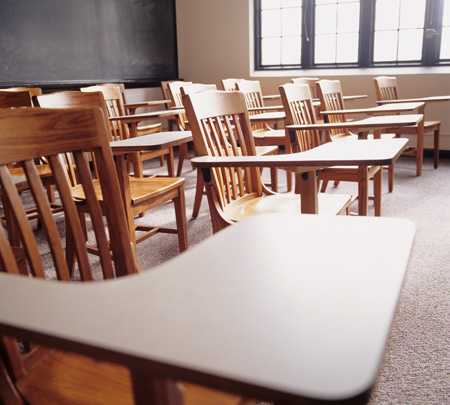Community NPIs: Flu Prevention in Community Settings

What are community nonpharmaceutical interventions (NPIs)?
Community NPIs are policies and strategies, apart from pharmaceutical interventions such as vaccination and medical treatment delivery methods, that organizations and communities put into place to help slow the spread of illness during an infectious disease outbreak, such as pandemic flu.Two of the most widely researched community NPIs include:
- Social distancing: Creating ways to increase distance between people in settings where people commonly come into close contact with one another. Specific priority settings include schools, workplaces, events, meetings, and other places where people gather.
- Closures: Temporarily closing child care centers, schools, places of worship, sporting events, concerts, festivals, conferences, and other settings where people gather.
Why are community NPIs important?
Annual flu vaccinations are the best way for people to prevent seasonal flu. However, if a new flu virus emerges that can rapidly spread from person to person worldwide, causing a flu pandemic, a vaccine may not be immediately available.
This makes planning and working together even more important for a community. Social distancing and closures interventions, while difficult to plan and carry out, can be the most effective ways that a community can protect itself from a pandemic’s negative impact.
The actions you take and plans you make today matter. To ensure the greatest impact, CDC recommends that communities and organizations incorporate a combination of personal, community, and environmental NPIs into their pandemic flu plans.
Community NPIs, like social distancing and closures, require careful planning and coordination. Public health professionals, planners, and leaders need to work together to help reduce the risk to their organizations and community from respiratory illnesses like pandemic flu. Recommendations include:
- Connecting. Collaborate with other professionals, leaders, and administrators in different settings to identify challenges and how they can be overcome in your community.
- Planning. When planning for social distancing and closures interventions, seek ideas for what has worked well in the past or could be improved next time. By gathering data, you can identify strategies for making these interventions work smoothly and with as little disruption as possible to your organization or community.
- Sharing. Communicate what you have tried and the obstacles you have faced so that other organizations and communities can also benefit from the work you have done.
Visit Community Mitigation Guidelines to Prevent Pandemic Influenza – United States, 2017 to learn more about how communities can plan for a flu pandemic.
Visit other parts of this website to learn about specific ways that people can protect themselves and others from getting and spreading the flu at home, at school, at work, and at a gathering.
Community NPIs: Flu Prevention in Community Settings
Planning Guidance and Checklists
For more information about Pre-Pandemic Flu Planning visit the Planning Guidance and Checklists page.
Selected Published Research
The following published research includes studies on NPIs conducted by researchers within the past 5 years that are published in peer-reviewed journals. (In alphabetical order by topic.)
Schools
- Nasrullah M, Breiding MJ, Smith W, McCullum I, Soetebier K, Liang JL, et al. Response to 2009 pandemic influenza A H1N1 among public schools of Georgia, United States – fall 2009. Int J Infect Dis 2012; 16(5):e382-90.
- Mizumoto K, Yamamoto T, Nishiura H. Contact behaviour of children and parental employment behaviour during school closures against the pandemic influenza A (H1N1-2009) in Japan. J Int Med Res 2013; 41(3):716-24.
Workplace
- Page last reviewed: August 2, 2017
- Page last updated: August 2, 2017
- Content source:


 ShareCompartir
ShareCompartir